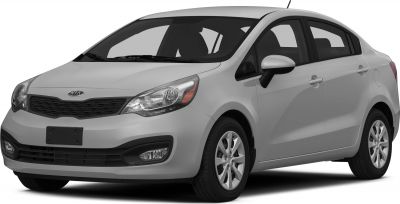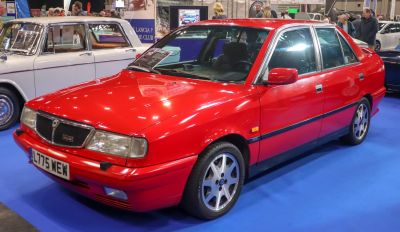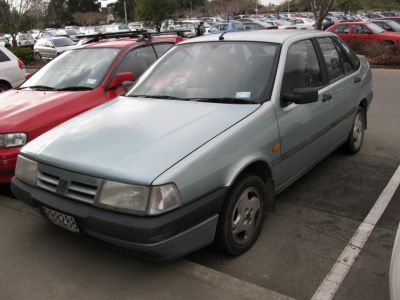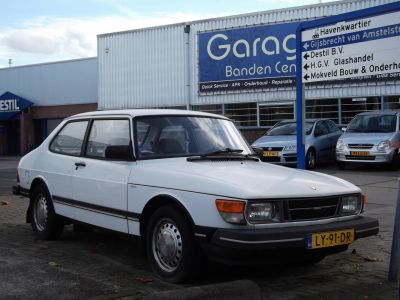 1991 BMW 3 Series Sedan (E36) Dimensions, Size & Specs
1991 BMW 3 Series Sedan (E36) Dimensions, Size & SpecsMeasurements of the 1991 BMW 3 Series Sedan, engineered for optimal performance and comfort
| Dimensions | |
|---|---|
| Length: | 4352-4433 mm171.3-174.5 in14.3-14.5 ft |
| Width: | 1698-1843 mm66.9-72.6 in5.6-6.0 ft |
| Height: | 1393-1568 mm54.8-61.7 in4.6-5.1 ft |
| Ground Clearance: | 110-145 mm4.3-5.7 in0.4-0.5 ft |
| Trunk Capacity: | 435-520 liter15.4-18.4 cu ft |
| Trunk Capacity (Max): | 1200 liter42.4 cu ft |
| Weight Specifications | |
| Curb Weight: | 1190-1425 kg2624-3142 lbs |
| Maximal permitted Weight: | 1650-1950 kg3638-4299 lbs |
| Tire Specifications | |
| Rims Sizes: | 15-inch rims:
|
| Tire Sizes: |
|
The BMW 3 Series Sedan (E36), produced between 1990 and 2000, is a quintessential compact executive car that perfectly balances performance and practicality. This generation of the BMW 3 Series spanned model years from 1991 onwards and is well-regarded for its refined design, dynamic driving experience, and solid build quality. Measuring between 4352 mm and 4433 mm (171.3 to 174.5 inches) in length, the E36 sedan exhibits a sleek yet practical silhouette, making it suitable for both city and highway driving. The width varies from 1698 mm to 1843 mm (66.8 to 72.5 inches), providing ample shoulder room and contributing to vehicle stability. With a height ranging from 1393 mm to 1568 mm (54.8 to 61.7 inches), the E36 maintains a balanced stance on the road. The car weighs between 1190 kg and 1425 kg (2625 to 3140 lbs), depending on the specific trim and equipment, supporting agile handling characteristics. It offers a maximum weight capacity ranging from 1650 kg to 1950 kg (3638 to 4299 lbs). Luggage capacity is versatile, with a trunk space between 435 and 520 liters (15.4 to 18.3 cubic feet), expandable to 1200 liters (42.4 cubic feet) when rear seats are folded, accommodating larger cargo needs. Ride height stands between 110 mm to 145 mm (4.3 to 5.7 inches), striking an effective balance between sporty handling and everyday usability. The BMW E36 typically comes equipped with 15-inch wheels, specifically 7J x 15 rims paired with tires in sizes 185/65 R15, 205/60 R15, or 185/65 R15, emphasizing the generation’s focus on sporty yet comfortable driving dynamics. This BMW 3 Series generation remains a popular choice for enthusiasts who value classic German engineering blended with versatile dimensions suitable for various driving environments.
Discover the standout features that make the 1991 BMW 3 Series Sedan a leader in its class
Have a question? Please check our knowledgebase first.
The BMW 3 Series Sedan (E36), produced between 1990 and 2000, has a length that varies between 4352 mm and 4433 mm (approximately 171.3 to 174.4 inches). This range reflects slight variations across different model versions within the generation. Its length places it comfortably within the compact executive car segment, providing a good balance of cabin space and exterior dimensions.
The width of the BMW 3 Series Sedan (E36) ranges from 1698 mm to 1843 mm (about 66.9 to 72.5 inches), depending on the exact model and trims (such as wider versions or those with specific trim packages). This width offers a fairly roomy cabin for both front and rear passengers, making the vehicle comfortable for everyday commuting and longer trips while maintaining a manageable footprint for urban driving.
The height of the BMW 3 Series Sedan (E36) varies from 1393 mm to 1568 mm (approximately 54.8 to 61.7 inches). This variation is influenced by factors such as suspension height, model variants, and optional equipment. This height dimension ensures adequate headroom inside the cabin, offering comfort for average-sized adults both in the front and rear seats, while maintaining a sleek and aerodynamic profile typical of BMW designs during the 1990s.
The curb weight of the BMW 3 Series Sedan (E36) ranges from 1190 kg to 1425 kg (about 2625 to 3140 pounds). The maximum weight, which includes the vehicle's curb weight plus passengers, cargo, and fuel, ranges from 1650 kg up to 1950 kg (around 3638 to 4299 pounds). These weight specifications reflect the balance between solid build quality and performance, supporting nimble handling and efficient engine performance.
The BMW 3 Series Sedan (E36) offers a luggage capacity ranging from 435 liters to 520 liters (approximately 15.4 to 18.3 cubic feet) with the rear seats in the upright position. When the rear seats are folded down, the luggage capacity significantly increases to about 1200 liters (approximately 42.4 cubic feet), making it practical for transporting larger cargo or luggage during travel or moving.
The ride height or ground clearance of the BMW 3 Series Sedan (E36) ranges between 110 mm and 145 mm (approximately 4.3 to 5.7 inches). This relatively low ground clearance is typical for a sedan focused on sporty handling and aerodynamics. While it enhances cornering stability and driving dynamics on paved roads, it means the car is less suited for rough terrains or high-speed driving over uneven surfaces. Drivers should be cautious over speed bumps and steep driveways.
Yes, the BMW 3 Series Sedan (E36) comfortably fits into a standard residential garage. Its maximum length is up to 4433 mm (174.4 inches or about 14.5 feet), width up to 1843 mm (72.5 inches or about 6 feet), and height up to 1568 mm (61.7 inches or about 5.1 feet). Standard garage dimensions usually accommodate vehicles up to about 6 meters (20 feet) in length and 3 meters (10 feet) in width, so the E36 falls well within these limits, allowing for additional clearance space around the car.
Compared to its predecessor, the BMW 3 Series Sedan E30, the E36 generation saw an increase in overall size. The E36 is longer, wider, and slightly taller, which translates into improved interior space and comfort. Lengthwise, the E30 was around 4330 mm (170.4 inches) compared to the E36's range of 4352 mm to 4433 mm. Width also increased from approximately 1680 mm (66.1 inches) in the E30 to between 1698 mm to 1843 mm in the E36. This growth improved rear passenger space and luggage capacity, offering a more modern and spacious feel while retaining the sporty character.
When compared to its contemporaries in the compact executive segment such as the Audi A4 (B5) or the Mercedes-Benz C-Class (W202), the BMW 3 Series Sedan (E36) sits competitively in terms of size. Its length (4352-4433 mm) and width (1698-1843 mm) are comparable to these rivals, offering a sporty yet comfortable cabin. For instance, the Mercedes-Benz C-Class (W202) measured around 4500 mm in length, slightly longer, while the Audi A4 (B5) was similar in dimensions. The E36's balance of relatively lower height and precise handling helped it stand out despite similar exterior footprints.
The BMW 3 Series Sedan (E36) typically came equipped with rim sizes of 15 inches, specifically 7J x 15 rims. Tire sizes offered include 185/65 R15 and 205/60 R15. These tire and rim dimensions were standard for the era and contributed to the car's responsive handling and ride comfort. The relatively narrow widths and moderate sidewalls allowed for a balance between grip and ride quality, supporting the E36's reputation as a driver-focused compact executive sedan.
Discover similar sized cars.

| Production: | 2011-2015 |
|---|---|
| Model Year: | 2011 |
| Length: | 4370 mm172.0 in |
| Width: | 1700 mm66.9 in |
| Height: | 1470 mm57.9 in |

| Production: | 1990-2001 |
|---|---|
| Model Year: | 1990 |
| Length: | 4355 mm171.5 in |
| Width: | 1695 mm66.7 in |
| Height: | 1445 mm56.9 in |

| Production: | 1989-1999 |
|---|---|
| Model Year: | 1989 |
| Length: | 4345 mm171.1 in |
| Width: | 1700 mm66.9 in |
| Height: | 1417-1430 mm55.8-56.3 in |

| Production: | 1990-1996 |
|---|---|
| Model Year: | 1990 |
| Length: | 4354 mm171.4 in |
| Width: | 1695 mm66.7 in |
| Height: | 1445 mm56.9 in |

| Production: | 2006-2014 |
|---|---|
| Model Year: | 2006 |
| Length: | 4342 mm170.9 in |
| Width: | 1692 mm66.6 in |
| Height: | 1435 mm56.5 in |

| Production: | 2018-present |
|---|---|
| Model Year: | 2018 |
| Length: | 4342 mm170.9 in |
| Width: | 1692 mm66.6 in |
| Height: | 1435 mm56.5 in |

| Production: | 2019-2022 |
|---|---|
| Model Year: | 2020 |
| Length: | 4340 mm170.9 in |
| Width: | 1983 mm78.1 in |
| Height: | 1470 mm57.9 in |

| Production: | 1984-1987 |
|---|---|
| Model Year: | 1985 |
| Length: | 4344 mm171.0 in |
| Width: | 1675 mm65.9 in |
| Height: | 1429 mm56.3 in |
